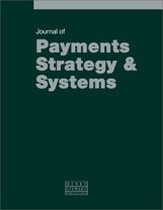Supply chain finance
Abstract
In the contingent situation of extreme reduction of credit flows, enterprises try to extract liquidity, as much as possible, through better and more efficient management of their operations. It becomes paramount, therefore, to understand the sources of possible internal financing. It is about aligning the operational flow with the financial flow. It is about fully evaluating the processes and the 'end-to-end' information that determine the values of liquidity, of the accounts and of the corporate working capital. The supply chain is a network of participants who trade goods, services and information in front of purchase and sales orders. The financial component, expressed through invoices and payments, acts as the 'glue' between the various participants. In such a context, control passes from corporates to the issuing institutions, that is, the banks. Banks also find themselves in dire straits owing to the serious economic crisis. They need to innovate products and services in an ever-more competitive — and prudent — market. By mapping the operational processes in front of these as well as other financial solutions, the supply-chain manager can guide the finance colleague proactively to involve the bank of reference to obtain solutions and services that positively condition the corporation's working capital.
The full article is available to subscribers to the journal.
